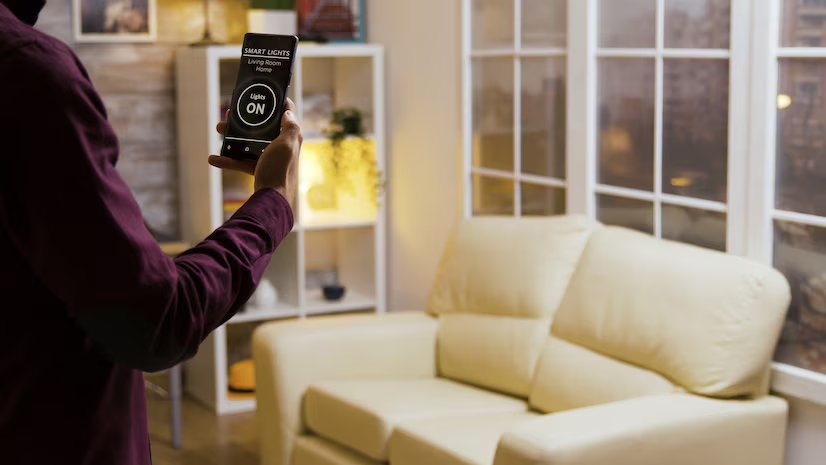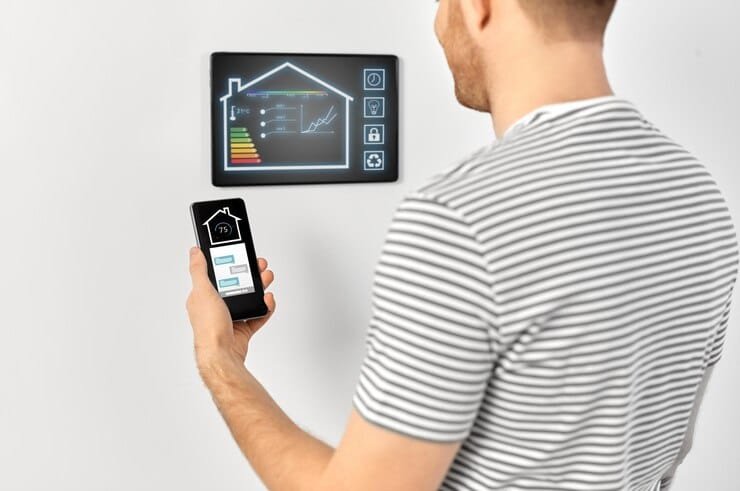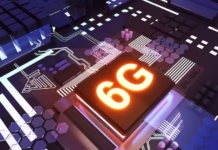Hold onto your fiber optic cables, folks! The smart home revolution is HERE, and it’s less “smart assistants” and more “smart chaos” – at least for our friends in the fixed-line operator business. Picture this: a world where your toaster texts you, your fridge orders groceries (and judges your questionable late-night snack choices), and your curtains dramatically open to the sound of a chirpy AI announcing “Good morning, sunshine!” (even on Mondays). Thrilling, right? But for those trusty fixed-line operators, who’ve been happily humming along, delivering dependable (if slightly beige) connectivity for decades, the question looms large: are they about to become… extinct? Like the dodo, but with slightly better customer service.
Forget the dial-up days, these are the days of lightning-fast Wi-Fi, mesh networks, and more devices battling for bandwidth than a Black Friday sale at an electronics store. Smart home technology isn’t just a cool gadget; it’s the lifeblood of a connected world – think convenience, security, and the ability to yell at your smart speaker to dim the lights (because let’s face it, flipping switches is so last century). And who’s providing that lifeblood? Well, that’s the million-dollar question – or should we say, the gigabit question?
This isn’t about doom and gloom, though. It’s about adaptation, innovation, and maybe a little bit of strategic panic. We’re not saying fixed-line operators are on their way to the dinosaur museum (yet!), but the smart home landscape is shifting faster than your robot vacuum cleaner can clean a spilled latte. So grab your popcorn (preferably ordered via a smart fridge), because this blog post is about to get real interesting – buckle up, buttercup, we’re diving into the wild west of smart home connectivity!

Positive Trends: The “Smart” Party’s Life of the Party
- AI is the new party animal: Artificial intelligence isn’t just a buzzword; it’s the life of the party! Think self-learning thermostats (goodbye, energy waste!), proactive security systems (bye-bye, burglars!), and personalized entertainment experiences (hello, robot butler!). Companies like Google (with its Nest products) are showing how AI can be the smartest guest at the party, constantly improving the user experience.
- Subscription services: The never-ending buffet: Forget one-time purchases! Recurring revenue streams from subscription services are the smart home’s equivalent of a bottomless mimosa bar. Companies like Ring are proving that security isn’t just a one-time expense – it’s an ongoing need fueling recurring revenue. This makes investors happy; happy investors mean happy companies.
- Interoperability: Finally, everyone gets along!: Remember the awkward family gatherings where everyone just sits in separate corners? Interoperability, the ability for devices from different brands to play nice, is changing that. The more connected the devices the merrier the party. Standards organizations and collaborations are paving the way for a more inclusive, and profitable, smart home ecosystem.
Adverse Trends: The Party Crashers
- Security concerns: The uninvited guests: Security breaches are the party crashers nobody wants. Data privacy and hacking are legitimate concerns. Companies must invest heavily in robust security measures – otherwise, the party’s over before it’s begun!
- Complexity and user adoption: The clueless uncle: Setting up a smart home can be as confusing as your Uncle Barry’s explanation of quantum physics. Ease of use and intuitive interfaces are crucial. Simplify! Simplify! Make it easier than assembling IKEA furniture (which is a feat in itself).
- High initial costs: The pricey open bar: Smart home tech can be expensive. Making smart home tech more affordable will open the doors for a wider audience. Think creative financing options; perhaps a “smart home layaway plan?”
Actionable Insights: The Party Planner’s Guide
- Embrace AI: Integrate AI into every aspect of your offering. Think predictive maintenance, personalized experiences, and voice-activated everything.
- Subscription models: Think beyond one-time sales. Develop compelling subscription tiers with add-on features and services.
- Prioritize security: Invest in foolproof security features and be transparent about data handling. Security breaches can be a killer for your party.
- Simplify user experience: Design intuitive interfaces and offer robust customer support. Remember, everyone’s invited, even the technologically challenged.
- Explore affordability: Offer financing options or create more budget-friendly product lines to broaden your market reach.
The smart home party is just getting started! By addressing these trends strategically, companies can not only survive but thrive in this exciting – and sometimes chaotic – market. So grab your party hats, and let the smart home revolution begin!
Healthcare: Imagine a retirement home, not your grandma’s stuffy old place. Smart sensors track residents’ movements, preventing falls (and lawsuits!). Medication dispensers, like tiny, responsible robots, ensure timely doses. Doctors get real-time alerts—no more frantic phone calls at 3 AM! It’s preventative care, smart-home style!
Technology: A tech company’s office? Forget fluorescent lights and beige walls. Smart lighting adjusts to the time of day, boosting productivity (and employee morale!). Smart thermostats learn employee preferences, saving energy (and money—who doesn’t love that?). Meeting rooms book themselves automatically, eliminating scheduling chaos (a true miracle!).
Automotives: Think car dealerships—not just dusty showrooms anymore! Smart home tech controls climate and lighting, creating a luxurious experience. Customers can remotely access car specs & view inventory, all from their comfy homes. It’s like buying a car…from the comfort of your couch!
Manufacturing: Smart sensors monitor equipment in factories, predicting failures before they happen. This prevents costly downtime—avoiding the “oops, the whole production line just went kaput!” moment. Real-time data allows for optimization of processes, boosting efficiency (and profit margins!). It’s automation, but make it smart.
Hospitality: Hotels now offer a seamless experience, all controlled by your phone. Guests adjust room temperature, lighting, and even order room service—all without lifting a finger (or calling a busy front desk). It’s personalization at its finest—a guest experience so smooth, it’s almost illegal.
Fixed-Line Operators (FLOs): FLOs can bundle smart home services with their existing offerings—a win-win for everyone! Imagine offering a security package that integrates directly with the home network, providing an extra layer of protection (and an extra line item on your bill!). It’s smart home services…with a side of profit! Bundle your services, don’t just sell ’em—it’s a smart move!
Bonus: Smart homes are the future, my friend. The more connected we get, the more opportunities arise. This isn’t just about gadgets; it’s about data, efficiency, and user experience—things that get investors’ hearts pumping! So, strategize, innovate, and get those smart home services rolling!
Enhanced Cybersecurity Measures: Following several high-profile smart home breaches, companies like ADT and SimpliSafe have heavily invested in advanced encryption and multi-factor authentication. This builds trust and reassures customers concerned about data privacy. Expect to see even more robust security features integrated directly into hardware and software.
AI-Powered Personalization: Google Nest and Amazon are leveraging AI to create truly personalized smart home experiences. This goes beyond basic automation; AI learns user preferences and anticipates needs. For example, adjusting lighting and temperature based on individual routines and even predicting energy usage to optimize costs.
Subscription Service Expansion: Companies are moving beyond one-time hardware sales. They’re offering tiered subscription services encompassing professional monitoring, proactive maintenance, and expanded cloud storage. Vivint Smart Home is a prime example, offering different levels of service with varying features. This creates recurring revenue streams.
Strategic Partnerships and Acquisitions (Inorganic): In 2023 and beyond, we’ve seen increased M&A activity. Smaller, specialized smart home companies with niche technologies (like advanced energy management or innovative security features) are being acquired by larger players. This allows for rapid expansion of capabilities and market reach. For instance, a major telecom operator might buy a company specializing in smart home energy management.
Focus on Interoperability: The industry is finally addressing the frustration of incompatible devices. Companies are adopting standardized protocols like Matter to ensure seamless integration between different brands’ smart home devices. This open standard is vital for customer satisfaction and wider adoption.
Expansion into New Verticals: Companies are diversifying beyond traditional offerings. We’re seeing smart home services integrate with healthcare, offering remote patient monitoring and fall detection systems. Others are tapping into the growing demand for smart home solutions in commercial settings, like offices and apartment buildings.
Bundling with Existing Services: Fixed-line operators are increasingly bundling smart home services with existing internet and television packages. This lowers the barrier to entry for customers and offers a compelling value proposition. Comcast and Verizon are actively pursuing this strategy, making smart home tech more accessible.
Gamification and Engagement: Companies are employing gamification techniques to incentivize user adoption and interaction. Reward programs, progress tracking, and leaderboards can increase user engagement and foster a sense of community.

Outlook & Summary: Will Fixed-Line Operators Become a Dinosaur-Sized Regret? 🦖
So, smart homes… the future is now (ish). Think less “Jetsons” and more “slightly less chaotic Jetsons.” And the question is: are our trusty fixed-line operators ready for this wild ride, or will they be left in the dust like a rotary phone in a TikTok video?
The next 5-10 years? Buckle up, buttercup! We’re predicting a tsunami of connected devices, each needing a slice of that internet pie. Smart fridges ordering groceries? Toasters posting their achievements on Instagram? It’s happening, people! And who’s gonna handle the data deluge? That’s where the rubber meets the road, or, more accurately, the fiber optic cable.
Our take-away? Fixed-line operators are sitting on a goldmine (or, let’s be honest, a gigabit goldmine!), but they need to adapt faster than a chameleon in a disco. They need to ditch the dial-up mentality and embrace the smart home revolution. Partnering with tech companies, innovating like crazy, and perhaps even investing in those sassy smart toasters… that’s the winning strategy. Ignore the smart home wave, and you might find yourselves relegated to the footnotes of history, next to the cassette player and the pager.
Think of it like this: smart homes are the new Wild West. Fixed-line operators can be the sheriffs, keeping everything running smoothly and securely. Or they can be the tumbleweeds, slowly blowing away in the digital wind. The choice is theirs.
So, the burning question, smart home gurus and fixed-line folks: are you ready to ride this rollercoaster, or are you going to get left behind holding a corded phone? Let’s hear your thoughts!









